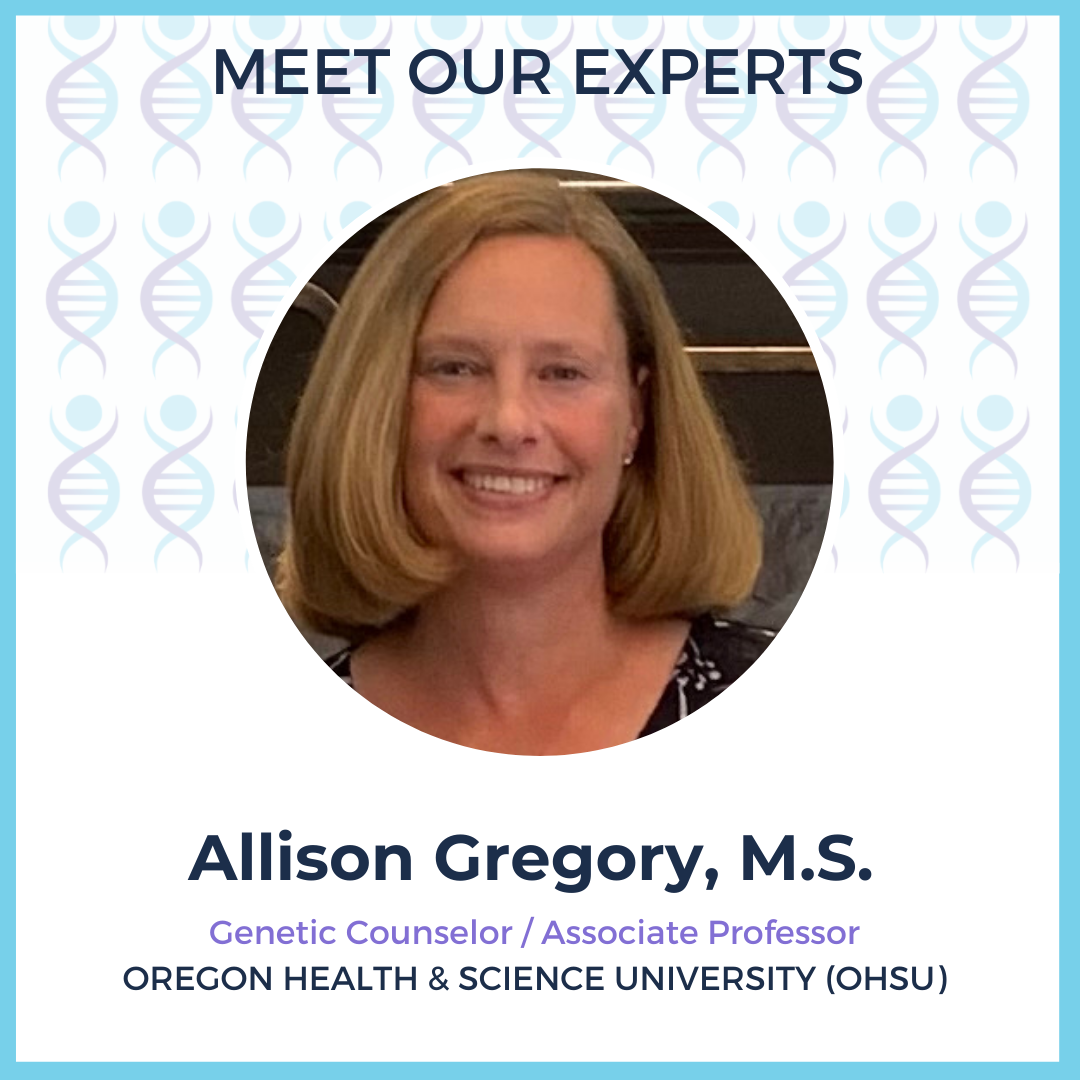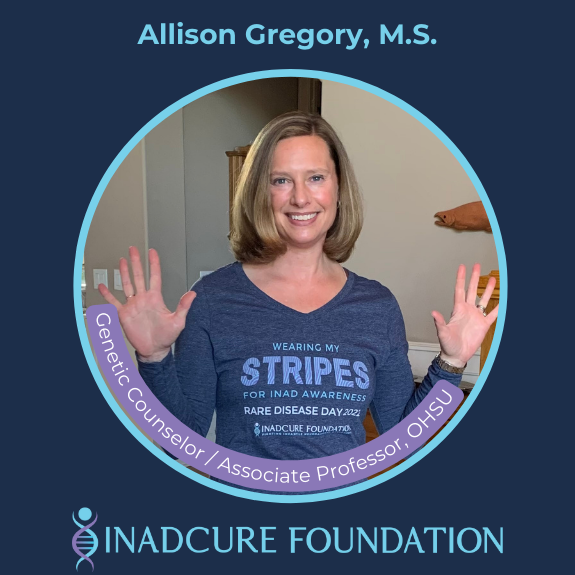The INADcure Foundation is in its 6th year of providing funding to OHSU/the Hayflick Lab. We have provided funding for their PLANready Natural History Study and the clinical care guidelines for INAD/PLA2G6-related disorders, both of which are currently in progress.

Allison Gregory, M.S.
Genetic Counselor / Associate Professor
Oregon Health & Science University (OHSU)
LET’S MEET: Allison Gregory
I was born and raised in Portland, OR, where I now live with my family. My husband and I have been married 27 years and have 2 sons, ages 17 and 20. I am a little fanatical about playing tennis, am involved in several leagues, and captain teams. More recently, this has carried over to a new infatuation with pickleball! I love spending time outdoors during the few beautiful summer months we get here.
For me, genetic counseling provided the perfect blend of science and counseling. It has allowed me to work independently, challenge myself with complex concepts in genetics, and support wonderful people through difficult times. The transition to rare disease was a natural one along this path and has been very fulfilling.
I think that genetic counselors all have exposure to rare disease and work with them, but most of us tend to be generalists. I decided I was all-in on the NBIA disorders in 2002, when we moved back to Portland from California. I met Susan Hayflick and Penny Hogarth and was sold!
Some of my most rewarding experiences are related to gene discovery in our lab. Each time we have hunted for a new gene, it has been with the help of our powerful repository of biosamples and clinical information. After finding a new gene, it was my job and honor to contact all the families from the repository in whom we had found gene variations, and let them know we had finally identified a cause for their child’s disease. When we found the gene for INAD in 2006, I was on pregnancy leave and making these calls from home because they were so important! Not only could we provide information and closure, but it opened the door to things like prenatal diagnosis or pre-implantation genetic diagnosis for some families. For a different gene, WDR45, I remember a very special call with the mother of an adult child who had died several years prior. She was so appreciative that we had kept trying and found an answer, even after her daughter was gone.
We have had a very long-standing interest in INAD, even before we identified the gene or better understood the different forms of PLAN. I have been able to observe a process over 2 decades that started with a handful of moms, progressed to gaining traction more formally, such as with the Hope’s Hope Foundation, and eventually evolved into the INADcure Foundation. I feel like I and our team at OHSU have been part of that evolution and am so pleased to see INADcure’s success today.
I am excited about gene therapy, because I think it will move towards a shared platform that may allow the FDA to approve new genes more quickly. The element of personalized medicine and making corrections according to individuals’ specific gene changes or category of change is also really exciting.
My favorite part always involves the people I get to interact with day to day. As the internet has grown and the world has gotten smaller, it means I can be part of an international hub for NBIA. In any given week, it’s common for me to email and have virtual meetings with families and individuals from around the globe. It is very gratifying to be able to help them, provide them with good information and resources, at a time when they are often in crisis.
I play tennis–I am very lucky to have a network of teammates who are always available to play and really fun to be around. We do USTA leauges and other competitions together. I also spend a lot of time watching my kids play sports and supporting them. Two of my titles include “baseball mom” and “golf mom,” which are very different kinds of spectation. We also do a lot of fishing together as a family.
Patience!
Horse by Geraldine Brooks–it was great!

